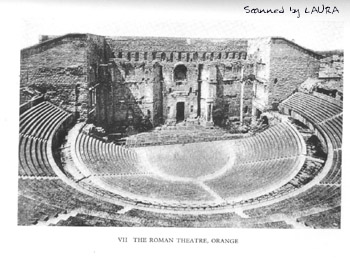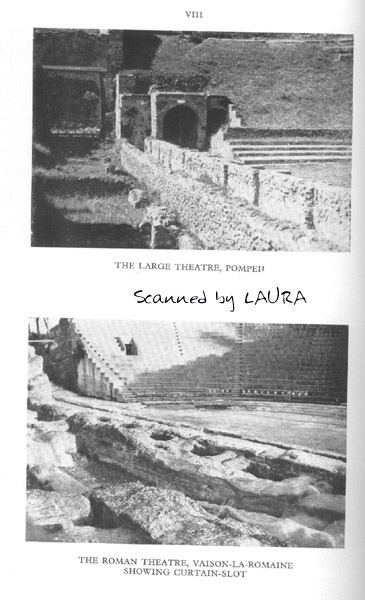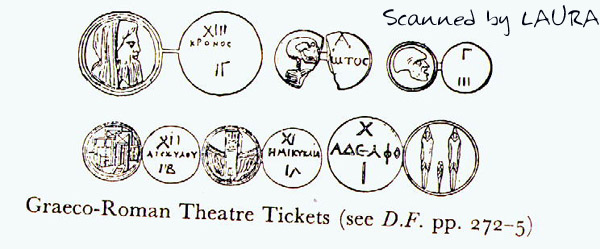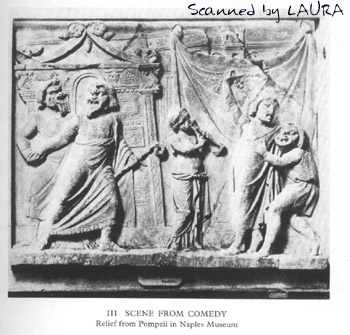
A Roman theater
Roman drama developed in the third century BC although it began to spread in the fourth century BC when the Roman Republic spread into Greek territories absorbing it’s drama and theater.
The Roman stage was the most essential feature of Roman theater. It was very large, 80 to 100 feet wide, and made of wood. It was not more than five feet high. In front of the stage and the front row of seats was a flat space not used by Roman performers but was where movable seats were set up for distinguished spectators. In Roman times the front row filled up quickly as it still does today. From the flat space, called “orchestra” by later generations, there was a short flight of steps leading to the stage that was not used by performers. These steps would have been convenient for a Roman citizen to get onto the stage but there is no evidence found that the steps were used during an actual play.

The theaters were freestanding, indicating a major architectural difference between Greek and Roman theaters. Greek theaters used slopes and hillsides to support the seating area while Roman theaters used the arch to aid in the construction of freestanding theaters.
The scenery of the plays in Roman theaters were scarce but significant to the writing. In the back of the stage was a three-story facade with three doors representing houses. Most of the Roman comedies took play in the street in front of these three “houses”. Another piece that was permanently on the stage was the altar, which was involved in practically all of the plays.
Behind the stage was the actors’ dressing room, the front wall forming a permanent black-scene to the audience. The actors had five ways to get onto the stage for their cues; the three doorways at the back of the stage, and two side entrances called wings.
The architecture of the theaters in Rome were developed from Greek theaters. The actual building was developed after the period of classical writing ended. Only three theaters were built in the city of Rome because the inhabitants of the city were afraid of offending the gods. They believed that if they built a theater in honor of one of the gods, another god would become upset and offended because it wasn’t built for him or her.


Scenes from Roman plays
